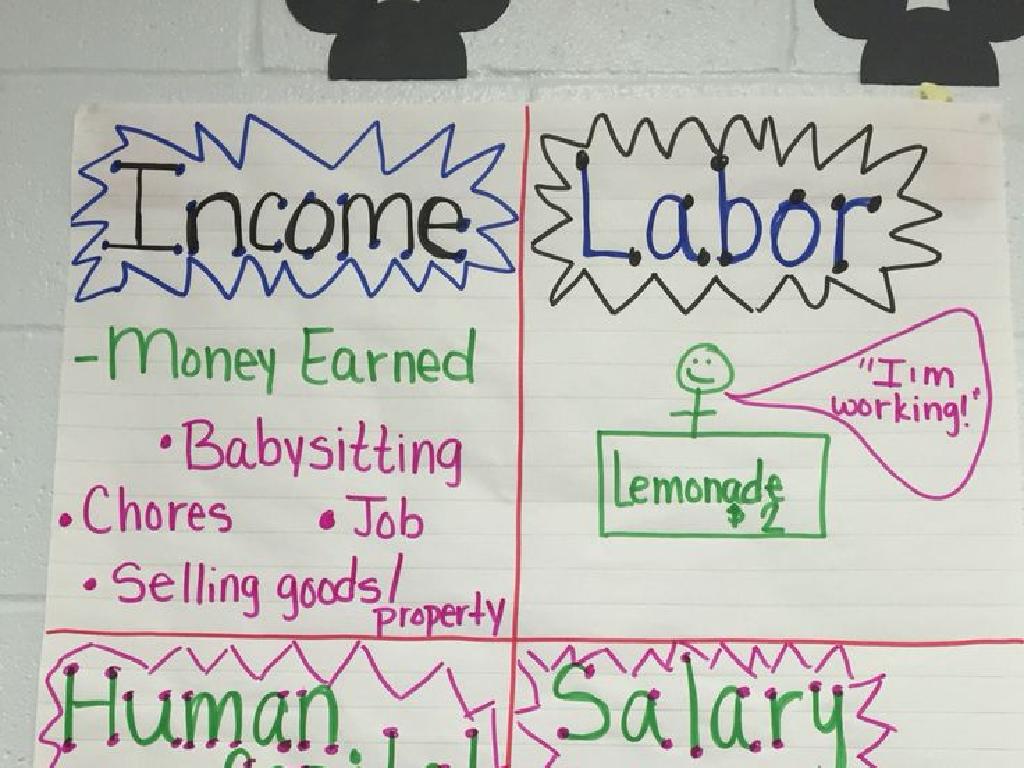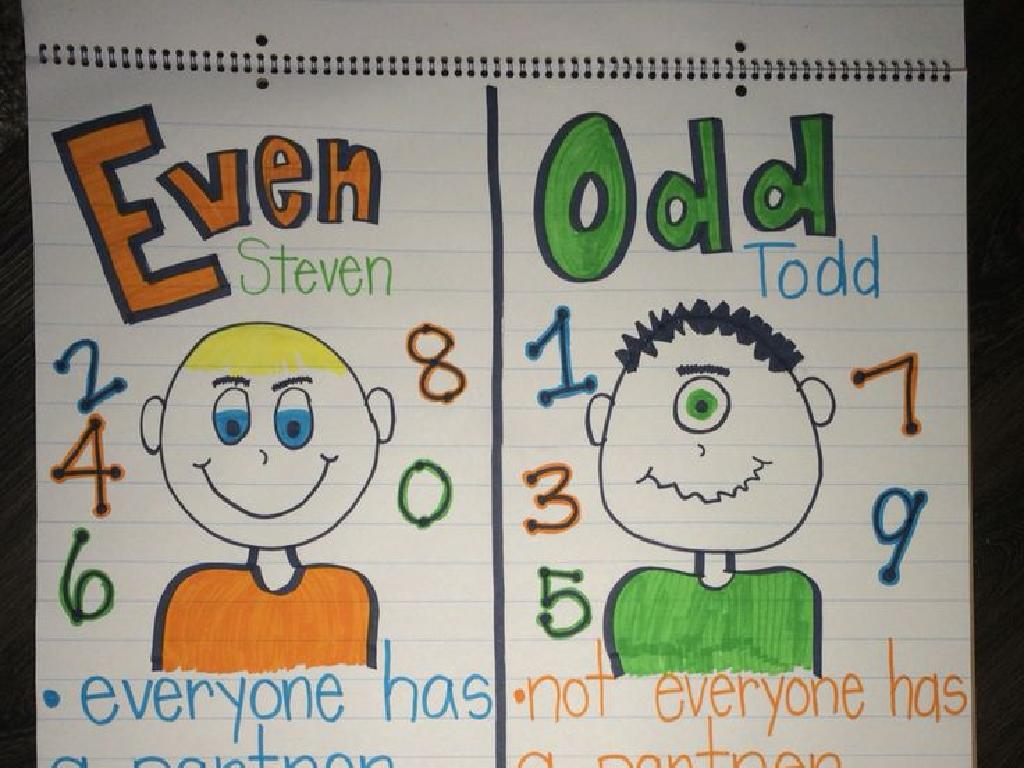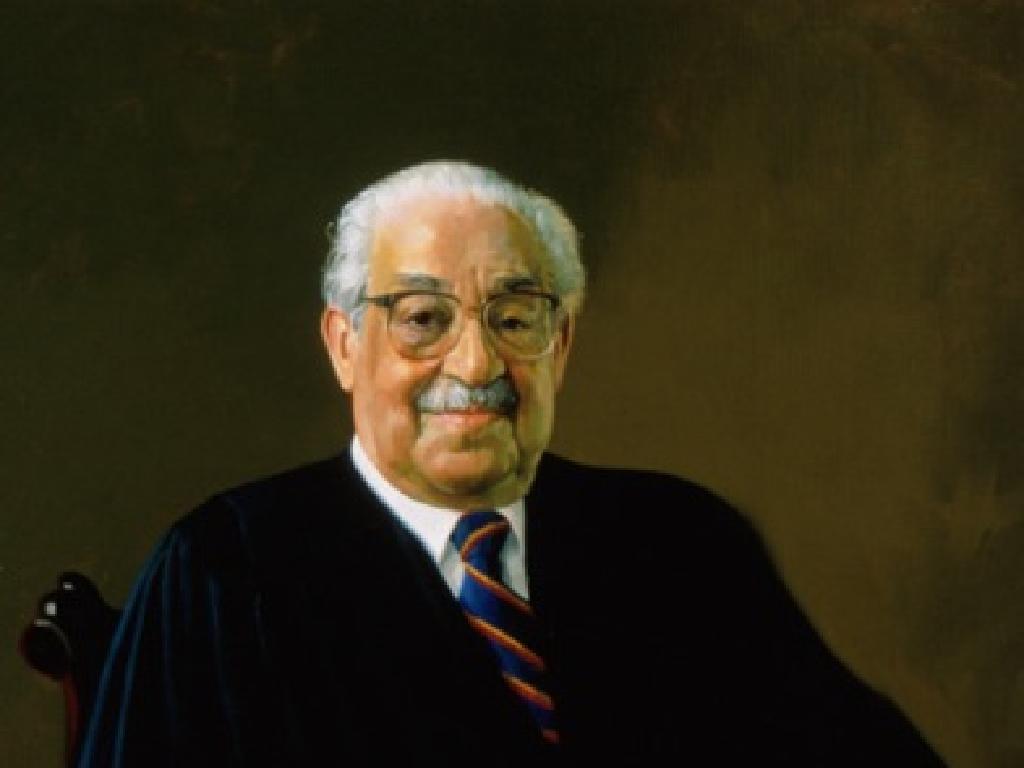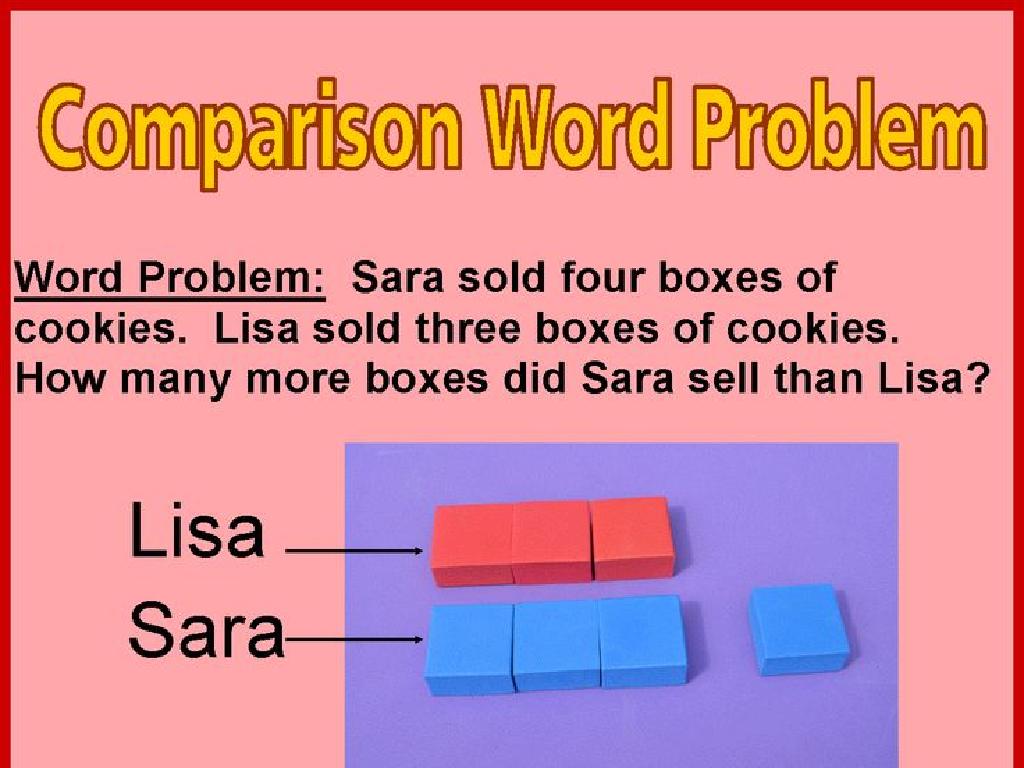Identify Action Verbs
Subject: Language arts
Grade: Third grade
Topic: Verb Types
Please LOG IN to download the presentation. Access is available to registered users only.
View More Content
Today’s Adventure: Action Verbs!
– Verbs show action or state
– Action verbs are doing words
– Words like ‘sing’ or ‘write’
– Examples: run, jump, eat
– ‘Birds fly’, ‘Dogs bark’
– Find action verbs in sentences
– Look for words that show what someone or something is doing
|
This slide introduces the concept of verbs to the students, emphasizing action verbs. Begin by explaining that verbs are an essential part of speech that tell us what a subject is doing or being. Highlight that action verbs are ‘doing’ words that show the action taken by the subject. Provide clear examples of action verbs and use them in simple sentences to illustrate their use. Encourage students to think of actions they do every day as examples. Finally, prepare an activity where students will identify action verbs in sentences, reinforcing their understanding of the concept. This interactive approach will help solidify their grasp of action verbs in a fun and engaging way.
Exploring Action Verbs
– What is an action verb?
– It’s a word that shows what someone or something does.
– Examples of action verbs
– Words like ‘run’, ‘jump’, ‘write’, and ‘think’.
– Finding actions in sentences
– Look for the word that tells us what is happening.
– Practice identifying action verbs
|
This slide introduces the concept of action verbs to third-grade students. Begin by explaining that action verbs are words used to describe what someone or something is actively doing. Provide clear examples such as ‘run’, ‘jump’, ‘write’, and ‘think’ to illustrate the point. Then, guide students to identify action verbs within the context of sentences, enhancing their understanding of how these verbs function in language. Encourage students to practice by finding action verbs in sentences from their favorite stories or creating sentences of their own. This interactive approach will help solidify their grasp of action verbs in a fun and engaging way.
Action Verb Hunt Activity
– Observe pictures to find actions
– Discuss actions with a classmate
– What is the subject doing in the picture?
– List out the action verbs together
– Understand action verbs as a class
– Action verbs show what someone or something is doing
|
This slide introduces an interactive class activity designed to help students identify action verbs through visual aids. Students will work in pairs to observe various pictures and discuss the actions taking place within them. This collaborative effort encourages peer learning and helps students articulate their thoughts. After the discussion, the class will come together to compile a list of the action verbs identified, fostering a collective learning environment. The teacher should facilitate the activity by providing clear examples and ensuring that each student participates. Possible actions depicted in the pictures could include running, jumping, reading, or painting, which are relatable and easily identifiable by third graders. The goal is for students to recognize that action verbs are words that express physical or mental actions.
Spot the Action Verb!
– Listen to the sentence carefully
– Find the action verb
– The action verb is the word that shows what someone or something is doing
– Understand what ‘action’ means
– ‘Action’ means doing something like ‘run’, ‘jump’, or ‘think’
– Practice with an example
– In ‘The dog runs across the yard’, ‘runs’ is the action verb
|
This slide is designed to help students identify action verbs in sentences. Start by reading a sentence to the class and then ask the students to spot the action verb. Explain that an action verb tells us what the subject of the sentence is doing. Give them the example sentence ‘The dog runs across the yard’ and ask them to identify ‘runs’ as the action verb. Encourage them to think about the action taking place and to look for words that express that action. Practice with more examples and provide immediate feedback to ensure understanding. This activity will enhance their ability to recognize verbs in different contexts and improve their grammatical skills.
Action Verb Practice
– Let’s practice identifying action verbs
– Look at the sentences I show you
– Find the action verbs in each one
– For example, in ‘She runs fast’, ‘runs’ is the action verb
– Remember, action verbs show action
– Action verbs are words like run, jump, think, and eat
|
This slide is designed to engage the students in a practical exercise to identify action verbs. Start by explaining that action verbs are words that show what someone or something is doing. Display sentences on the board or on a projector and ask the students to find the action verbs. Encourage them to think about the action taking place in each sentence. Provide immediate feedback to ensure they understand the concept. For students who may struggle, give additional examples and guide them through the process. This activity will help reinforce their understanding of action verbs and how they are used in sentences.
Create Your Own Action Verb Sentences
– Think of a fun action
– Write a sentence using it
– For example: ‘The cat pounced on the toy.’
– Share with the class
– Listen to classmates’ sentences
– Learn from others’ examples
|
This slide is for a class activity that encourages students to apply their knowledge of action verbs by creating their own sentences. Start by explaining what an action verb is and give a few examples. Then, instruct the students to think of an action, such as ‘jump,’ ‘sing,’ or ‘run,’ and create a sentence that includes that action verb. Once they have written their sentence, ask volunteers to share with the class. This will help students learn from each other and reinforce their understanding of action verbs. Provide guidance and positive feedback to ensure a supportive learning environment. Possible activities could include acting out the verbs, drawing the actions, or creating a short story with multiple action verbs.
Class Activity: Verb Charades
– Let’s play Verb Charades
– Act out an action verb silently
– Mimic actions like ‘run’, ‘jump’, or ‘write’
– Classmates guess the verb
– Think about the movements that show the verb
– No speaking, only actions!
|
This interactive activity is designed to help students identify action verbs through a game of charades. Each student will take turns acting out an action verb without using any words, while the rest of the class tries to guess the verb based on the actions performed. This will encourage students to think creatively about how to express verbs through movement and to recognize verbs in a fun and engaging way. For the teacher: Prepare a list of action verbs suitable for the grade level. Ensure that each student gets a turn and encourage the audience to participate actively by guessing. You can also use a timer to add a sense of urgency. Possible verbs to act out could include ‘dance’, ‘eat’, ‘climb’, ‘paint’, etc. Make sure to praise the efforts of the students and provide guidance as needed.
Great Work on Action Verbs!
– Celebrating your success
– Action verbs show action
– They tell us what someone or something is doing
– Practice using action verbs
– Try to use new action verbs when you speak
– Incorporate verbs in daily talk
– Use them when telling stories or playing
|
This slide is a conclusion to reinforce the learning about action verbs. Congratulate the students on their hard work and remind them that action verbs are used to express physical or mental actions. Encourage them to practice by incorporating these verbs into their daily conversations, which will help them remember and understand the verbs better. Suggest that they use action verbs while telling stories, playing games, or describing their day. This will make their communication more vivid and improve their grasp of language arts.






